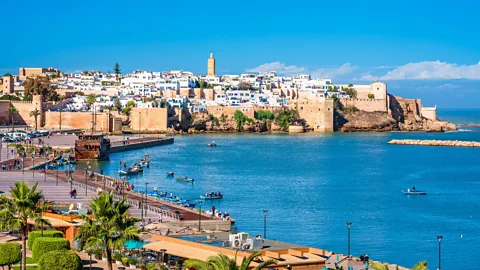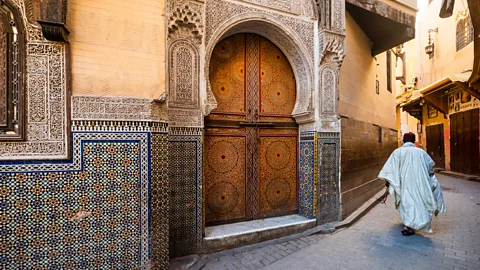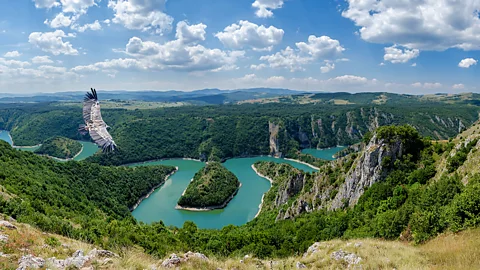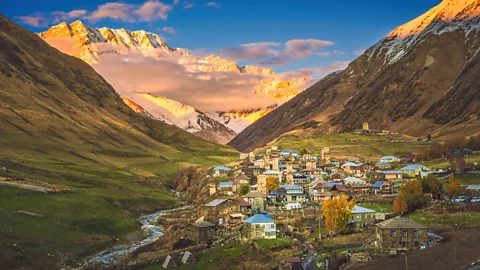Four countries embracing tourism and inviting travelers with open arms
Following this summer's intense protests against overtourism, there is some encouraging news.
While Europe is home to many overcrowded tourist destinations, numerous lesser-known places around the globe are eager for visitors. While St Mark's Square in Venice may host more tourists than pigeons, Barcelona has experienced escalating tensions with tourists, and the clifftop paths in Italy's Cinque Terre can resemble supermarket queues, there are other destinations just as culturally rich but free from the crowds. Globally, there are cities eager for tourists and scenic trails where you can enjoy solitude all day, Caliber.Az reports, citing foreign media.
Greenland
With a new international airport set to open in Nuuk, the capital of Greenland, later this year, and another planned for Ilulissat, the northern tourist hub, in 2025, Greenland is preparing to welcome more visitors.
This development marks a significant shift in Greenlandic tourism: until now, international flights had to land at Kangerlussuaq, a former US military base, with travelers then transferred by smaller aircraft to their final destinations. The new airports will allow more tourists to fly directly into the capital and facilitate the import of goods and export of products, including seafood, potentially boosting the economy. Tourism is expected to help fund these airport projects while creating jobs and ensuring long-term stability.

Greenland's tourism focus includes adventure tourism, such as rock climbing in Eastern Greenland and whale watching on the Greenland Ice Sheet, and year-round tourism, with an emphasis on dark sky experiences like stargazing and northern lights viewing. While attracting tourists in summer has been relatively easy, increasing winter tourism is crucial for providing local jobs throughout the year. Despite the challenges of attracting visitors to a place with minimal sunlight and temperatures as low as -50°C in winter, Greenland has embraced this with unique offerings like sky view cabins and igloos for northern lights experiences.
Morocco
Morocco is eager to attract more international visitors as it continues to enhance its tourism infrastructure and develop new hotels in preparation for co-hosting the 2030 World Cup with Spain and Portugal. The North African nation views the tournament as a prime opportunity to boost tourism and aims to double its annual visitor numbers to 26 million by 2030. To accommodate the influx of football fans and teams, Morocco will need at least 100,000 additional hotel beds.

To address this, many international hotel chains are expanding their presence, with new establishments set to open across the country, including the Waldorf Astoria in Tangier and 25 new Radisson Hotels before 2030, along with several hotels reopening after last year’s earthquake. Barbara Podbial, a Morocco specialist at the travel agency Flee Winter, who has been visiting the country for over two decades, has witnessed the positive effects of tourism firsthand. "Tourism has had a beneficial impact on Marrakesh," she noted. "The streets are cleaner, it's safer, and the aggressive selling is less common. However, with the rise in budget flights, the city can feel quite crowded." Increasing flight connections to Marrakesh is part of Morocco's strategy for tourism growth, so the city is unlikely to see a decrease in visitor numbers soon. For the World Cup, attention will shift to Morocco’s less-visited cities—Casablanca, Agadir, Fez, Rabat, and Tangier—where stadiums are being renovated, tourism is being developed, and new hotels are being constructed.

Among these cities, Barbara recommends Fez, Morocco’s cultural capital with the world’s largest medina and a less touristy atmosphere. She also suggests day trips from Agadir to Taroudant, known as "Little Marrakesh," which offers an authentic experience away from the tourist crowds. The coast near Taghazout provides surfing opportunities on sandy beaches, while Marrakesh visitors can explore the High Atlas mountains, just a few hours away. As Morocco focuses on developing its major cities, exploring nearby lesser-known destinations might offer a more authentic holiday experience.
Serbia
Serbia doesn’t have to look far for a tourism success story; its neighbor Croatia has seen remarkable results. However, while Dubrovnik has struggled with overtourism, Serbia is prioritizing sustainable development. The country is collaborating with the Global Sustainable Tourism Council to foster projects that emphasize cultural sensitivity rather than mass tourism.
This shift in Serbia’s tourism strategy reflects a broader focus. Previously centered around urban experiences, such as those in Belgrade, the current strategy aims to diversify rural livelihoods and enhance local economies through mountain tourism, rural tourism, and wellness offerings. "People in Serbia view the term 'tourist' positively," said George Colvin-Slee, a Serbia specialist adviser at Cox & Kings. "It’s an uncharted destination for many – we often send more visitors to Albania and Bosnia – but Serbia has some truly impressive locations."

The country’s mountains attract winter skiers and summer hikers, while ecotourism is growing in the hills, and birdwatching is gaining popularity. Natural springs in the foothills support resorts and wellness hotels.
As tourists enjoy these natural attractions, local businesses benefit and job security improves. This approach appears successful, with international tourism increasing by 20 percent in 2023. Colvin-Slee also suggests visiting Novi Sad, Serbia’s second city, known for its Habsburg-era architecture reminiscent of Prague and Budapest, but with fewer tourists. The city’s Austrian-influenced cuisine, including strudel and goulash, complements notable sights like the Petrovaradin Fortress, known as the "Gibraltar of the Danube."
Georgia
Georgia, situated along the Black Sea and bordering Türkiye, Russia, and Azerbaijan, is making significant strides to attract a diverse range of tourists, from disabled visitors to independent travelers and cruise tourists. The country’s new 10-year development plan includes improvements such as international signage to assist solo travelers, enhanced accessibility, better public transport, and expanded cruise ship facilities in Batumi, Georgia's second-largest city.
"Tourism is relatively new to Georgia," noted Natalie Fordham, a specialist at Wild Frontiers, a tour operator focusing on unique and adventurous destinations. "It presents a new career path, and we’ve seen some truly fantastic guides emerge. They are enthusiastic, speak excellent English, and are skilled at adapting to different visitors. Many travelers form lasting friendships with them and are eager to return." As a burgeoning tourism destination, Georgia lacks some infrastructure common in Western Europe, like extensive paved roads.

However, there is optimism that tourism revenue will drive such infrastructural improvements. "Tbilisi is my favorite capital city in the world," Fordham said. "It boasts charming cobblestone streets, historic fortress walls, museums, and more. There are also cave towns, Soviet-era architecture, and significant historical sites—Stalin was born here—along with stunning mountains, UNESCO-listed churches and monasteries, and a vibrant wine and food scene. There’s so much to explore that a week-long trip is recommended."








